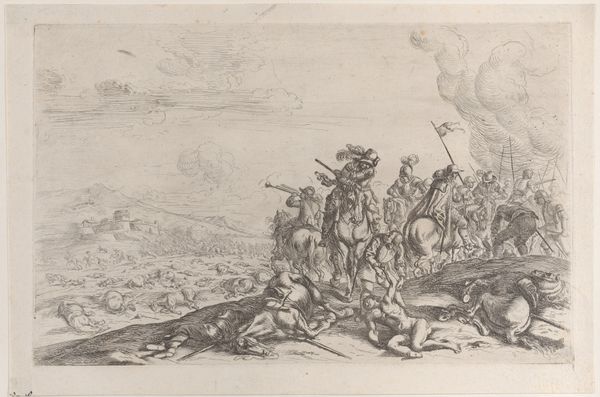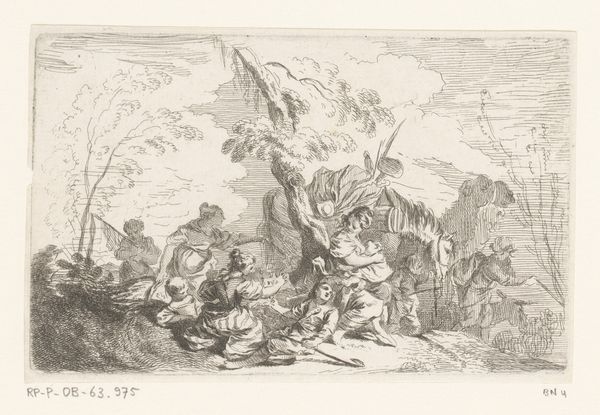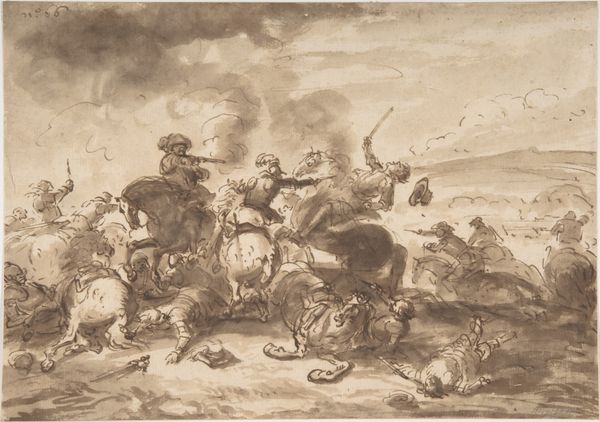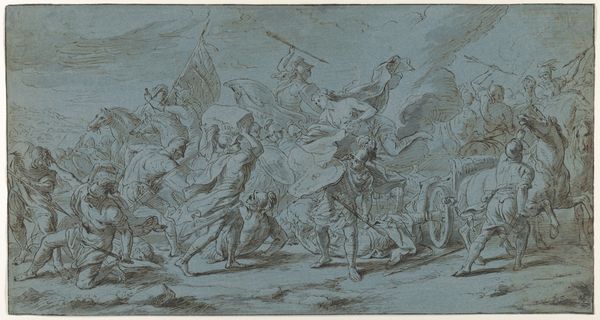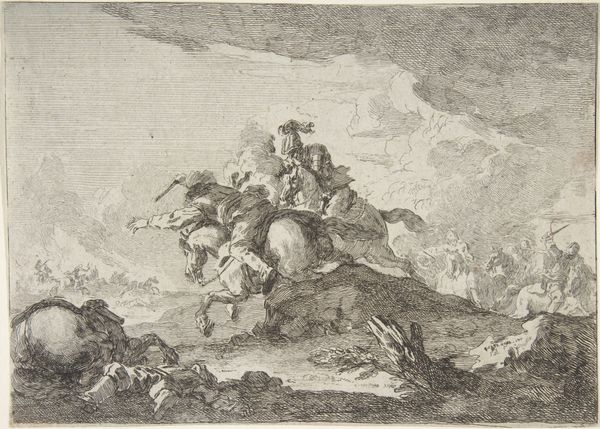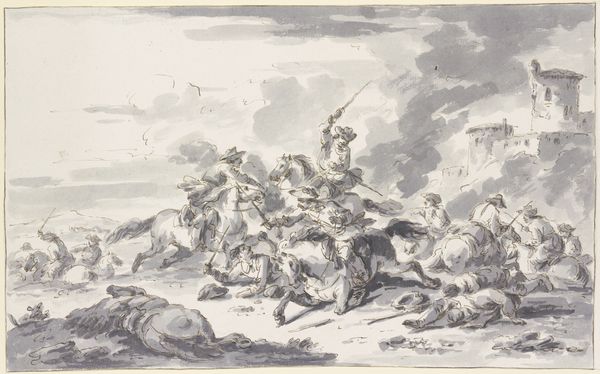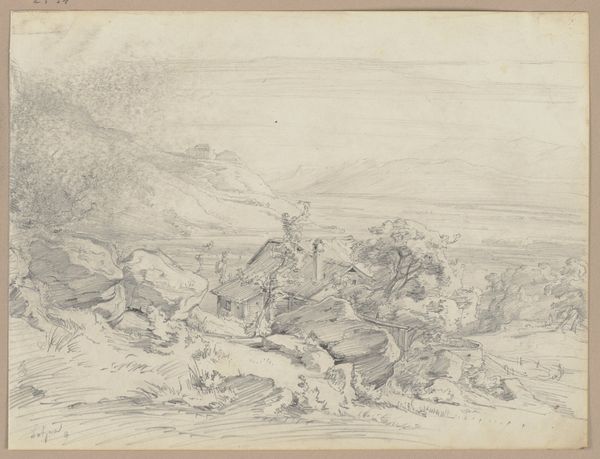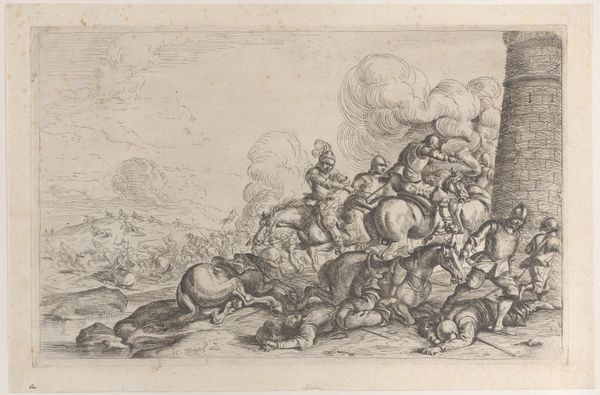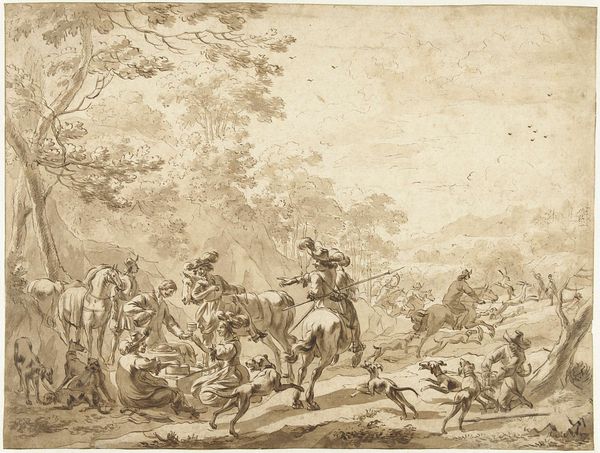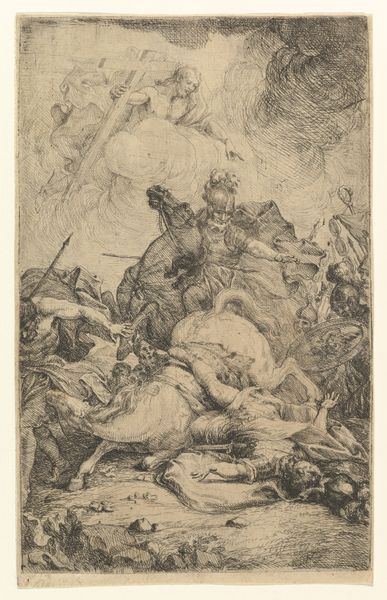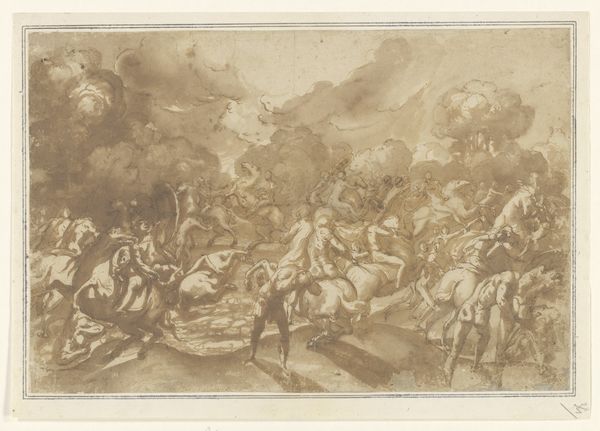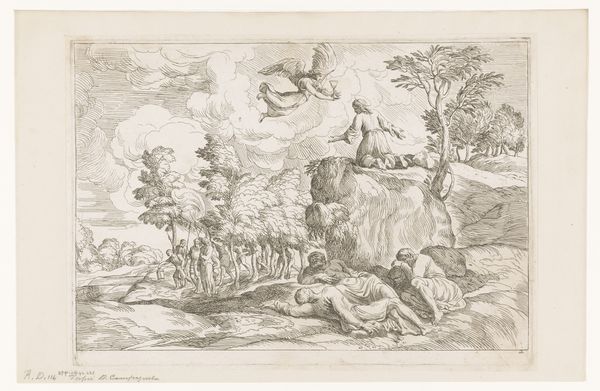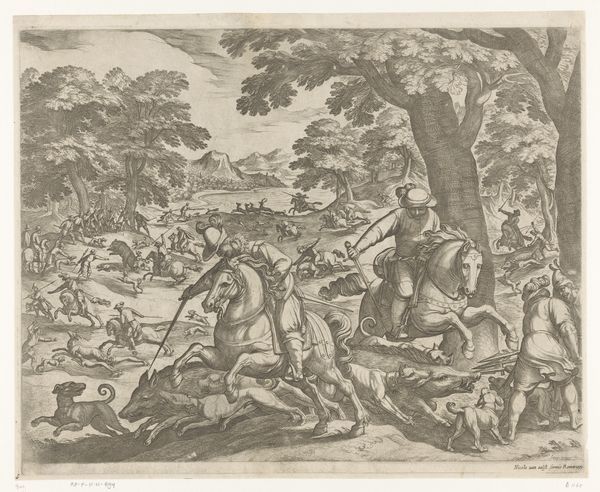
Plate 100: The death of Orpheus, from 'Ovid's Metamorphoses' 1641
0:00
0:00
drawing, print, etching
#
drawing
#
narrative-art
#
baroque
# print
#
etching
#
landscape
#
figuration
#
history-painting
Dimensions: Sheet (Trimmed): 5 3/16 × 8 3/16 in. (13.2 × 20.8 cm)
Copyright: Public Domain
Curator: This etching by Johann Wilhelm Baur, completed around 1641, is titled 'The Death of Orpheus, from Ovid's Metamorphoses'. It's currently held at the Metropolitan Museum of Art. Editor: My first impression is the stark contrast—a lone, serene figure on one side and then a chaotic jumble of figures on the other. Curator: It really captures the moment of Orpheus' demise, reflecting a breakdown in social order through the depiction of violence enacted by a group of women against this solitary musician. How interesting it is to consider how interpretations of Orpheus have shifted over time, sometimes representing homosexual desire or liminal artistry. Editor: You can really see Baur's handling of line in this piece, particularly when focusing on the weapons and limbs. The process itself seems like a violent scratching into the metal of the plate. What’s interesting is that such delicate lines were created to convey this rather brutal act. The material contradicts the scene depicted. Curator: That contradiction makes sense when considering that stories from Ovid often function as critiques of power and explore themes of gender-based violence, or acts of punishment that seem almost… theatrical. How are we meant to understand our role as viewers, encountering such brutality? Are we meant to question what incited this violence against Orpheus? Editor: Right, this work asks questions about the raw materials and conditions—even labor—necessary to tell tales that implicate the audience in considering these themes. In thinking about the work's material history, one wonders if Baur faced any specific challenges while producing the original plates and if that process added anything further to the scene portrayed here. Curator: Thinking about Orpheus and his role as a figure often read in connection to art's power reminds me how complicated any discussion of power always becomes. Who has it? Who abuses it? The female figures here, for example—we should see them not just as symbols of rage but as people responding to systemic challenges. Editor: Indeed. This image reveals so much about Baur's material treatment of the page. It's fascinating to see how art functions as both artifact and narrative tool, conveying information about production and societal views. Curator: Absolutely, and analyzing it with these intertwined considerations offers us deeper insights. Editor: I agree, seeing it this way truly illuminates how complex stories manifest within a particular time.
Comments
No comments
Be the first to comment and join the conversation on the ultimate creative platform.
